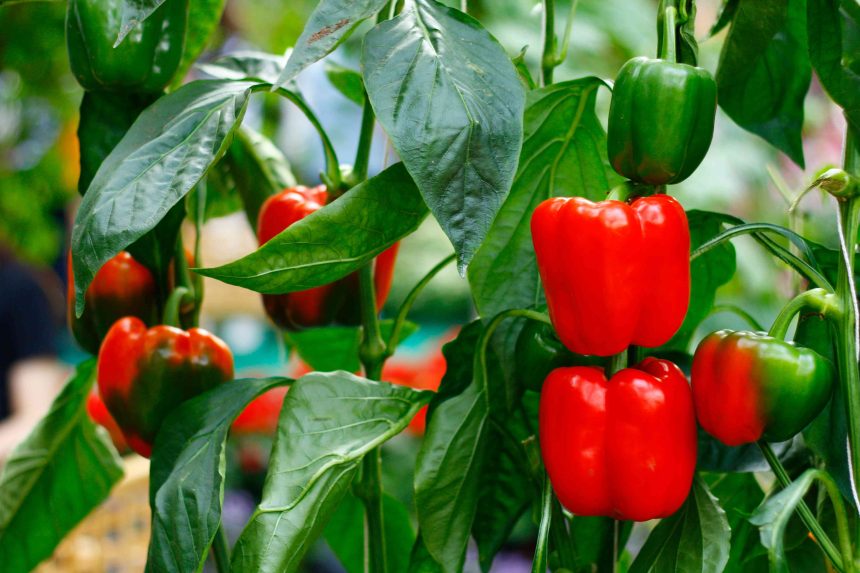Sandy soil can be a great option for beginner and expert gardeners alike. While this soil doesn’t retain water and nutrients quite as well as some of its counterparts, that trait can bode well for certain garden vegetables. Plus, sandy soil doesn’t require extensive upkeep.
This soil type is light, loose, and gritty, causing it to drain rapidly—so veggies that thrive in low-water environments and have deep taproots love its texture. Sandy soil also has the added benefit of an earlier growing season, letting you enjoy crops even sooner. Here, gardening experts share eight delicious vegetables that thrive in sandy soil—and that make for a nutritious harvest.
- Marcus Bridgewater, founder of Garden Marcus and author of How to Grow
- Manny Barra, master gardener at TeachMe.To and the community garden coordinator for Oakland, Calif.
- Keri Wilson, a horticulturist and writer for Garden Media Group
Sweet Potato
Acib Lamawuran / GETTY IMAGES
Sweet potatoes aren’t just nutrient-dense and long-lasting—they also have lush, vibrant vines that can beautify your outdoor space. “I have sweet potato vines growing in different parts of my garden without the intention of harvesting them, but simply because I like how the plant grows,” says Marcus Bridgewater, founder of Garden Marcus and author of “How to Grow.” He also notes that sweet potatoes are easy to reproduce in sandy soil.
- Zones: 5 to 11
- Size: 1 to 2 feet tall x 2 to 20 feet wide
- Care requirements: Full sun; well-drained soil
Carrot
udra / GETTY IMAGES
Carrots are another root vegetable that packs a nutrient-filled punch; it’s versatile in the kitchen, too. “There’s something magical about pulling a perfectly-formed carrot out of the soil—it’s like uncovering treasure!” says Manny Barra, master gardener at TeachMe.To. “Plus, growing heirloom varieties yields beautiful, colorful crops that are as pleasing to the eye as they are delicious.”
Barra notes that sandy soil should be deeply tilled or sifted to remove rocks or clumps that could hinder carrot roots. “Keep the soil consistently moist during germination, as carrots are slow to sprout,” he says.
- Zones: 2 to 11
- Size: 1 to 2 feet tall x 3 to 12 inches wide
- Care requirements: Full sun; well-drained soil
Okra
Getty / Jordan Lye
Okra is a resilient plant that can add a fun flavor profile to your meals and a spirited look to your garden—even if it’s planted in sandy soil. “It’s one of my favorite vegetables to grow because it has showy, ornamental blooms and unique leaves that add visual interest,” says Keri Wilson, a horticulturist and writer for Garden Media Group.
Its leaves can range from oblong to heart-shaped, while the flowers are a pastel yellow with a deep crimson center. “[The plant] quickly reaches heights of 4 to 6 inches and continuously produces a generous number of edible pods, even in the heat of summer,” she adds.
- Zones: 4 to 11
- Size: 3 to 6 feet tall x 2 to 4 feet wide
- Care requirements: Full sun; well-drained soil
Turmeric
Getty / Kanur Ismail
Turmeric might be known primarily as a spice, but technically, it’s a root vegetable—and like many others, it loves sandy soil. Bridgewater likes to plant it in his garden using whole turmeric he gets from the store.
“If any of those sprout before I consume it, I can plant it again and grow more of it,” he says. “Turmeric doesn’t need to be sprouted in order to be planted, but I take it as a sign that it’s time to return the root to the soil.“
Bridgewater appreciates the vegetable for its well-known health benefits and because it grows well without needing much maintenance. “I find that turmeric likes to be left alone after it’s planted—it’s just important to plant it 2 to 4 inches into the soil,” he says.
- Zones: 8 to 11
- Size: 3 to 4 feet tall x 3 to 4 feet wide
- Care requirements: Full to partial sun; well-drained soil
Zucchini
Yelena Shander / Getty Images
Zucchini, while not a root crop, thrives in sandy soil, producing beautiful—and ample—golden flowers before eventually bearing fruit. “I appreciate zucchini because it’s a prolific producer,” Barra says. “A single plant can yield enough for family meals, baking, and sharing with neighbors. I also find it fascinating how quickly the fruits develop—it’s almost like magic overnight.”
While zucchini grows quickly, it can be susceptible to pests like squash bugs. Barra advises using row covers to protect young plants and regularly inspect them. Zucchini should also be watered consistently to keep the fruits tender and sweet.
- Zones: 3 to 11
- Size: 1 to 3 feet tall x 2 to 3 feet wide
- Care requirements: Full sun; well-draining soil
Peppers
Kwangmoozaa / GETTY IMAGES
Peppers are a favorite because they’re so easy to grow. “I appreciate that they’re low-maintenance, drought-tolerant, and can produce a lot of peppers in a single growing season,” says Wilson. These plants appreciate plenty of sunlight and hydration to keep the sandy soil full of nutrients.
- Zones: 4 to 11
- Size: 1 to 4 feet tall x 6 to 24 inches wide
- Care requirements: Direct sun; well-drained soil
Garlic
Xiuxia Huang / Getty Images
Garlic is a key ingredient in almost every cuisine, and it loves sandy soil. “It’s frequently used in my kitchen, so it’s a joy to grow it at home,” says Bridgewater. “The flavor it brings to dishes is unparalleled.”
While some vegetables require less care, like turmeric, garlic can benefit from more attention. “Garlic especially likes rich soil, so amending sandy soil with compost will improve its potential for growth,” he adds.
- Zones: 1 to 12
- Size: 12 to 18 inches tall x 6 to 12 inches wide
- Care requirements: Full sun; well-drained soil
Radishes
Want to see the fruits (or vegetables) of your labor as soon as possible? “Radishes are quick growers, which makes them rewarding for impatient gardeners,” says Barra. “Their peppery flavor adds a nice bite to salads, and they’re one of the first signs of life in the garden during cooler months.”
To keep radishes tender and prevent them from becoming too spicy or woody, Barra suggests watering the plant regularly and planting it in cooler weather, like early spring or late summer. “Harvest promptly once mature to prevent them from becoming tough or hollow,” he says. For best results, grow them in sandy soil.
- Zones: 2 to 11
- Size: 6 to 8 inches tall x 6 to 9 inches wide
- Care requirements: Full to partial sun; well-drained soil







